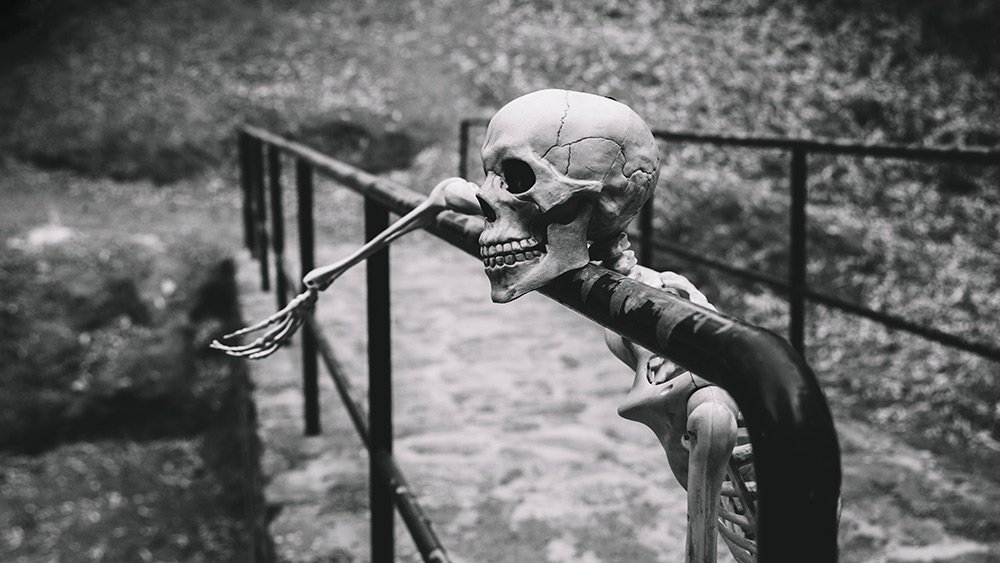Around the world, humans have always found both fascinating and shocking ways to engage with life, death, and the unknown. From vibrant rituals celebrating the departed to painful rites of passage testing physical limits, these horrifying traditions push the boundaries of what many consider normal. Across continents, whether it’s Mexico’s lively Día de los Muertos, Spain’s nerve-wracking baby-jumping ritual, or the bone-chilling finger-cutting custom of the Dani tribe in Indonesia, these practices reflect a deep respect for the unknown and a profound connection to ancestral heritage.
Each ritual tells its own unique story, so let’s get into them!
Mexico’s Día de los Muertos
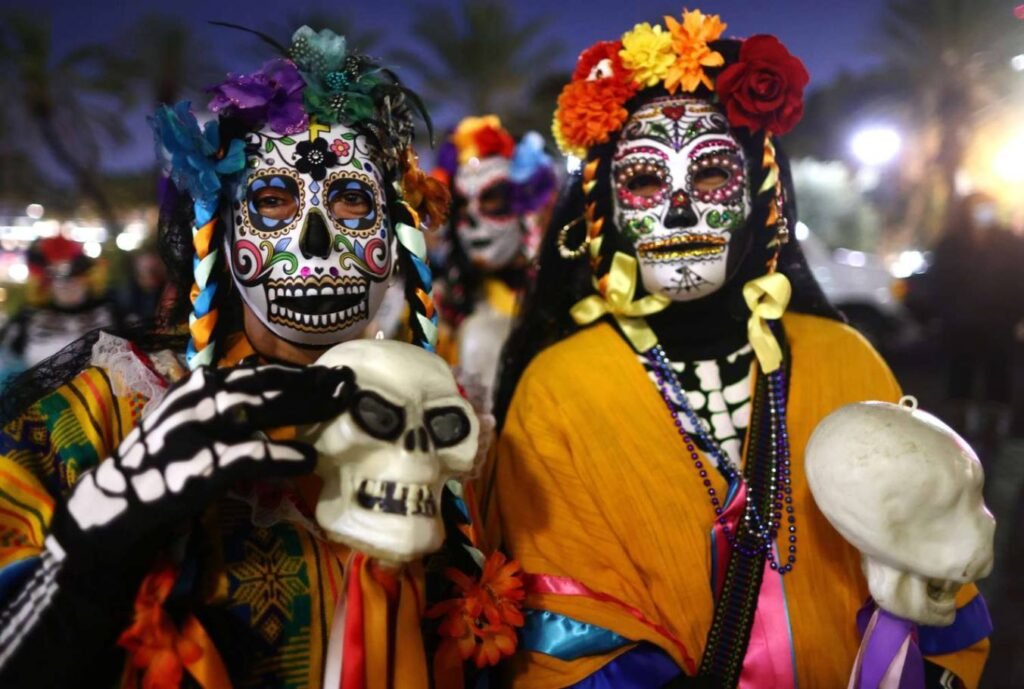
Día de los Muertos, a celebration that bridges life and death, turns remembrance into an art form. Celebrated on November 1st and 2nd, this tradition dates back to indigenous rituals honoring the dead. Unlike somber Western funerals, families create vibrant altars, known as ofrendas, adorned with candles, marigolds, food, and keepsakes. The belief is that these offerings guide the spirits of their loved ones back to the living world for a night of feasting and connection. The holiday gained international recognition in 2008, when UNESCO declared it a part of humanity’s cultural heritage. With icons like La Catrina, a satirical skeleton figure representing mortality with style, Día de los Muertos embraces death not as an end but as a part of life’s cycle.
Halloween Carnival in Ireland
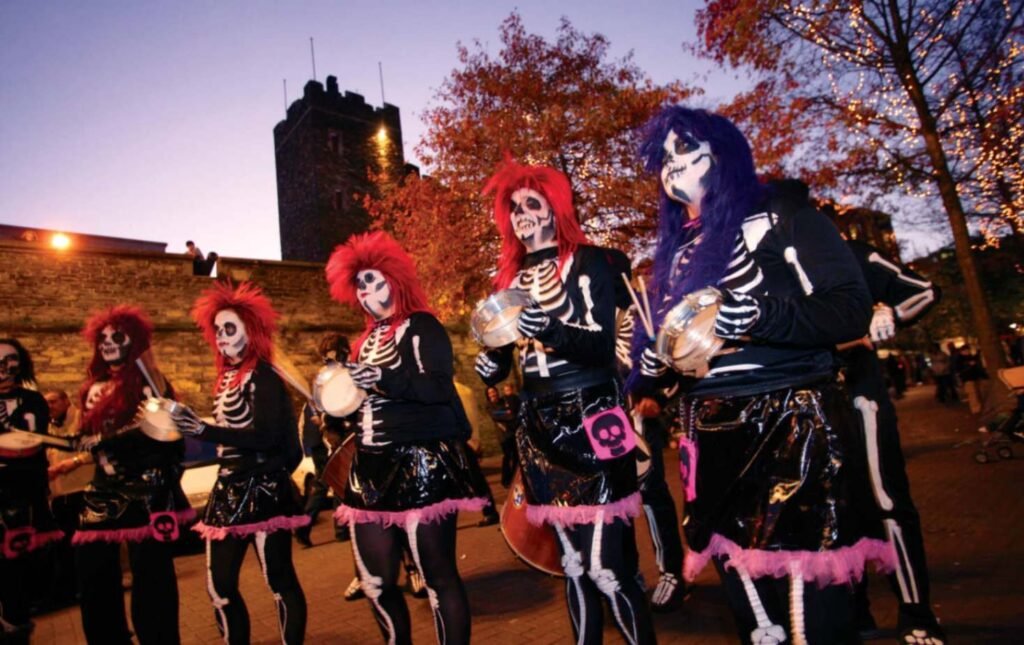
The roots of Halloween run deep in Ireland, where it all began with the ancient Celtic festival of Samhain. This tradition marked the end of the harvest and the start of winter, believed to be when the veil between the living and dead was thinnest. Today, Ireland’s Halloween Carnival is a lively mix of Samhain’s reverence for death, combined with parades, costumes, and fireworks. In addition, cities like Derry see thousands gather to celebrate the festival’s macabre origins. Moreover, the Irish Halloween Carnival actively honors ancient traditions by hosting haunted house tours and light shows, further blending modern festivities with the celebration of its rich history.
Also don’t miss the 8 Most Bizarre Festivals Around the World for the adventure seekers!
China’s Ghost Festival
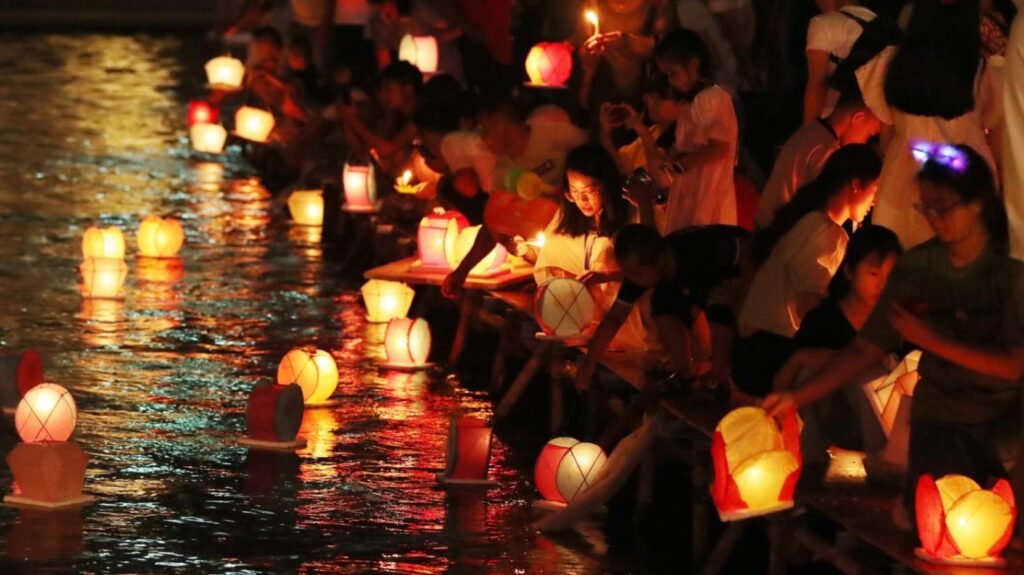
Imagine an entire month where the spirits of the dead are believed to roam the Earth freely. That’s the essence of China’s Ghost Festival, celebrated during the seventh month of the lunar calendar. Rooted in Taoist and Buddhist beliefs, families traditionally offer food, incense, and paper money to appease ancestors and wandering ghosts. As a result, this practice strikes a delicate balance between reverence and protection, with homes often guarded by talismans to ward off harmful spirits. Moreover, in a society that holds deep respect for ancestors, the Ghost Festival serves as a powerful reminder that the dead are never truly gone. By honoring them, people ensure harmony between the worlds of the living and the departed, thereby maintaining peace within both realms.
Haiti’s Festival of the Ancestors

In Haiti, the Festival of the Ancestors, or Fête Gede, takes honoring the dead to a deeply spiritual and mystical level. Celebrated in early November, this Voodoo-influenced tradition allows Haitians to connect with the Gede spirits, who serve as gatekeepers to the afterlife. During the festival, participants don black, purple, and white clothing, often with skull-like makeup, symbolizing the connection to death. Offerings of food, tobacco, and alcohol are made to the spirits, while rhythmic drumming and dancing intensify as the boundary between the living and the dead is believed to thin. This vibrant celebration underscores a powerful belief in spiritual communication, where the dead continue to play an active role, offering guidance, wisdom, or warnings to the living. The Gede spirits, particularly Baron Samedi, are central figures, embodying both death and humor, creating a celebration that’s both reverent and lively.
Finger Cutting, Indonesia
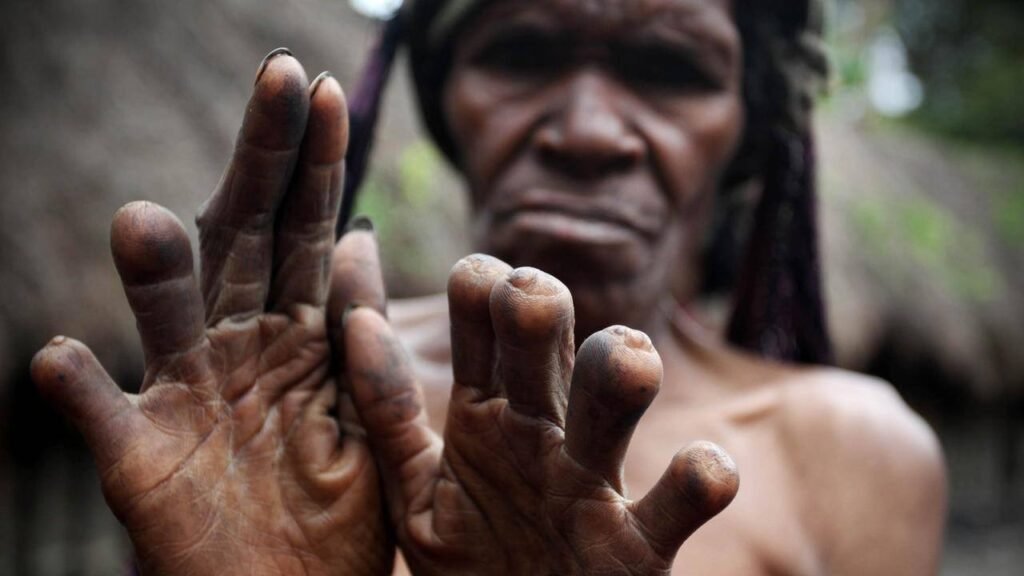
Grief in the Dani tribe of Papua, Indonesia, takes on a physical and painful form. When a family member dies, female relatives once showed their sorrow by cutting off part of their fingers. This act goes beyond mourning; it symbolically severs their connection to the deceased, ensuring the spirit does not linger to haunt the living. The finger-cutting ritual reflects the Dani’s intricate spiritual beliefs surrounding life, death, and the afterlife, making it an extreme yet significant form of body modification.
Baby Jumping, Spain

El Colacho, an annual tradition in the small Spanish village of Castrillo de Murcia, elevates faith—quite literally. Men dressed as devils, known as “El Colacho,” sprint through the streets, leaping over newborns laid on mattresses. This unusual yet symbolic ritual, dating back to the 17th century, is believed to purify infants from original sin and shield them from malevolent spirits. While it may seem unsettling, the community views this devilish jump as a blessing, ensuring a lifetime of protection for the babies who are part of this sacred event. It’s a bold, unconventional practice in a world where religious rites usually avoid flying devils.
Bullet Ant Initiation, Brazil
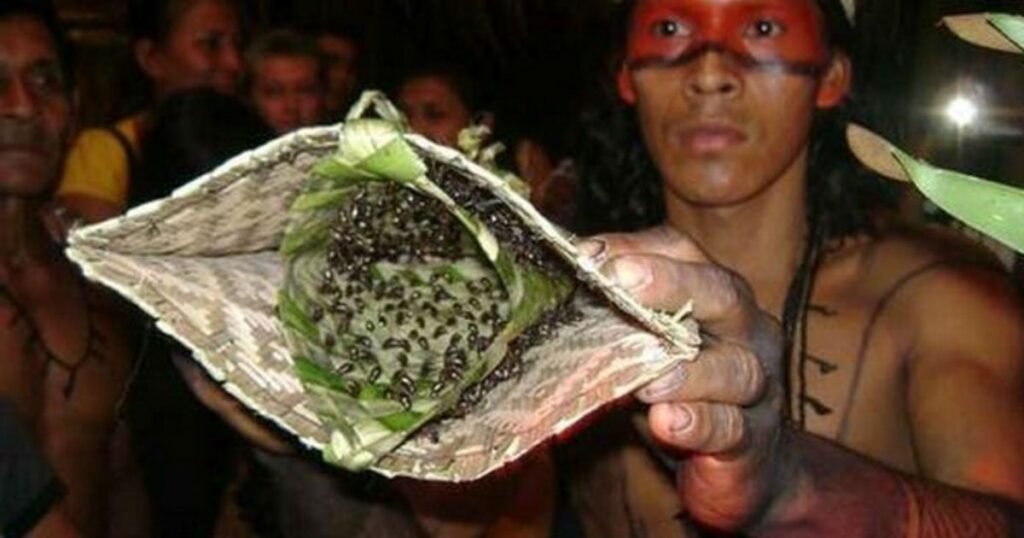
In the Brazilian Amazon, the Satere-Mawe tribe marks the transition from boyhood to manhood with a test of extraordinary pain: the Bullet Ant Initiation. Boys must wear gloves filled with bullet ants—an insect with the most painful sting in the world—for ten minutes while dancing to distract themselves from the excruciating pain. This isn’t just a coming-of-age ritual; it’s a demonstration of endurance, resilience, and strength. The tribe believes that only by surviving this intense pain can a boy prove himself ready for the responsibilities of adulthood. The young men may undergo this ritual multiple times to solidify their status within the community.
Sky Burials, Tibet

In Tibet’s mountainous regions, death becomes a return to nature through the ancient practice of sky burials. Rather than being entombed or cremated, the bodies are offered to vultures and scavengers, a method that returns the deceased to the earth in the most direct way. Rooted in Buddhist philosophy, this ritual emphasizes that the body is merely a temporary vessel. By offering it to the elements, the cycle of life is honored and completed. The stark simplicity of sky burials strips away the mystery of death, serving as a humbling reminder of humanity’s deep connection to the natural world.
Famadihana, Madagascar
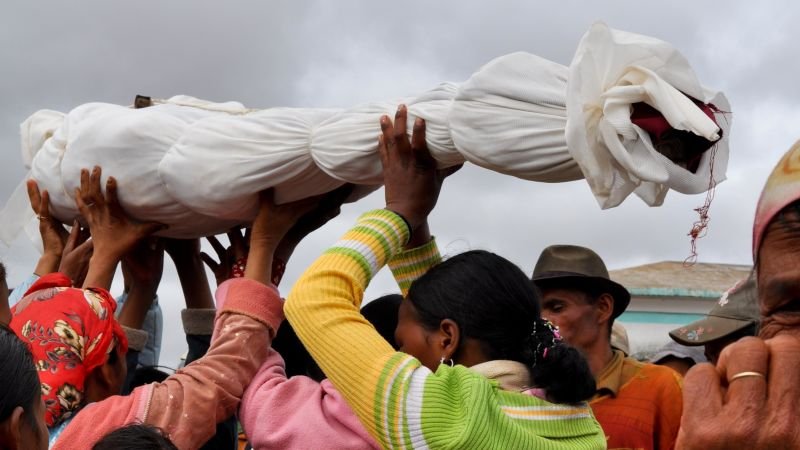
In Madagascar, dancing with the dead is not merely a metaphor; instead, it is an integral part of the lively tradition known as Famadihana, or the “turning of the bones.” Every few years, families exhume their ancestors, rewrap them in fresh cloth, and, in turn, dance with the bodies as part of a festive celebration. Consequently, this ritual helps keep the connection between the living and the dead alive, serving as both a family reunion and a funeral. For the Malagasy people, death doesn’t sever relationships; rather, it adds a new dimension to them. Ultimately, this vibrant celebration stands as a testament to the enduring bond between generations.
Though separated by oceans and centuries, these horror-infused traditions share a common purpose. They all confront life and death in distinct ways. For instance, offering the body back to nature in Tibet or enduring pain in Brazil clearly highlights our connection to the natural and spiritual worlds. Furthermore, these customs test our resilience while honoring the cycle of life. Ultimately, they show how humanity finds meaning in unsettling rites. In the end, every culture has its own unique way of embracing the inevitable.
Explore the most intriguing unexplained deaths in history and discover the mysteries and theories behind these baffling cases.

